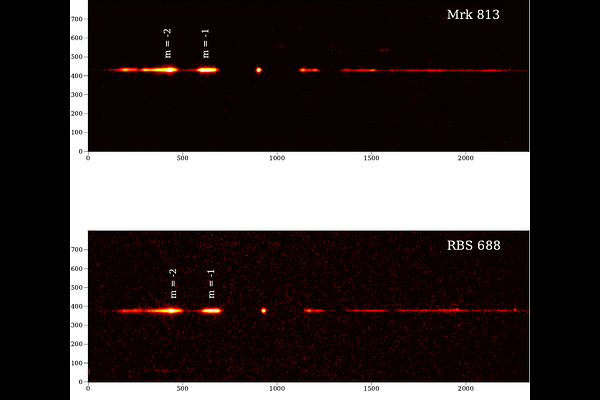Investigating Accretion Disk-Corona in Seyfert 1 galaxies: A UV/X-ray Spectral Study of Mrk 813 and RBS 688

Investigating Accretion Disk-Corona in Seyfert 1 galaxies: A UV/X-ray Spectral Study of Mrk 813 and RBS 688
Piyali Ganguly, Gulab C. Dewangan
AbstractWe present a broadband UV/X-ray spectral study of two Seyfert 1 galaxies, Mrk 813 and RBS 688, primarily based on AstroSat observations. These active galactic nuclei host relatively large super-massive black holes ($M_{BH} \sim 10^8 - 10^9M_{\odot}$), suffer negligible internal extinction/absorption, and are well suited for probing the inner regions of their accretion disks using far UV and soft X-ray spectra. In the case of Mrk 813, the AstroSat and HST far UV spectra are steeper than those expected from a standard accretion disk; the deficit of emission at shorter wavelengths suggests a truncated accretion disk with an inner radius $r_{in} \sim 70r_g$. Joint UV/X-ray broadband spectral modelling with FAGNSED and RELAGN models suggests that the apparent truncation in Mrk 813 is most likely due to the presence of a warm Comptonising disk in the inner regions that is responsible for the observed soft X-ray excess emission. RBS 688 lacks the soft X-ray excess emission, and the UV data are entirely consistent with a standard disk that appears to extend very close to the innermost stable circular orbit. Our study suggests the formation of the warm, optically-thick Comptonising corona in the innermost disk regions at higher Eddington fraction.